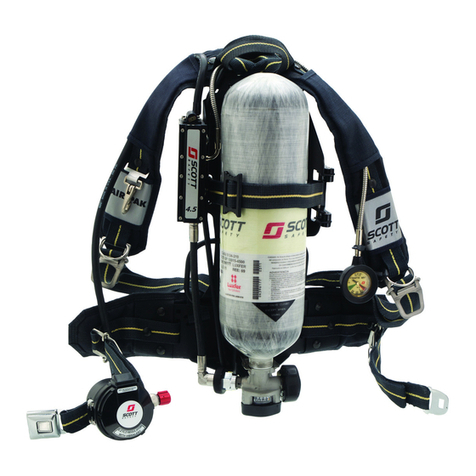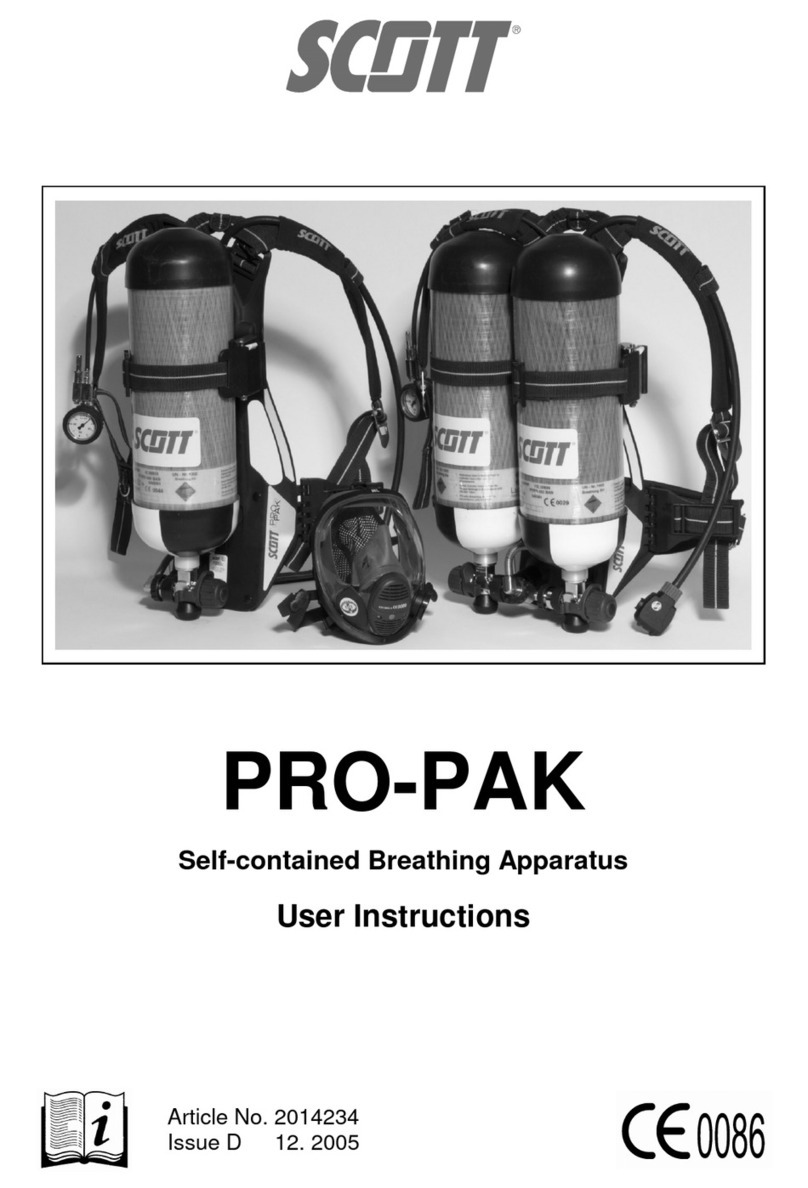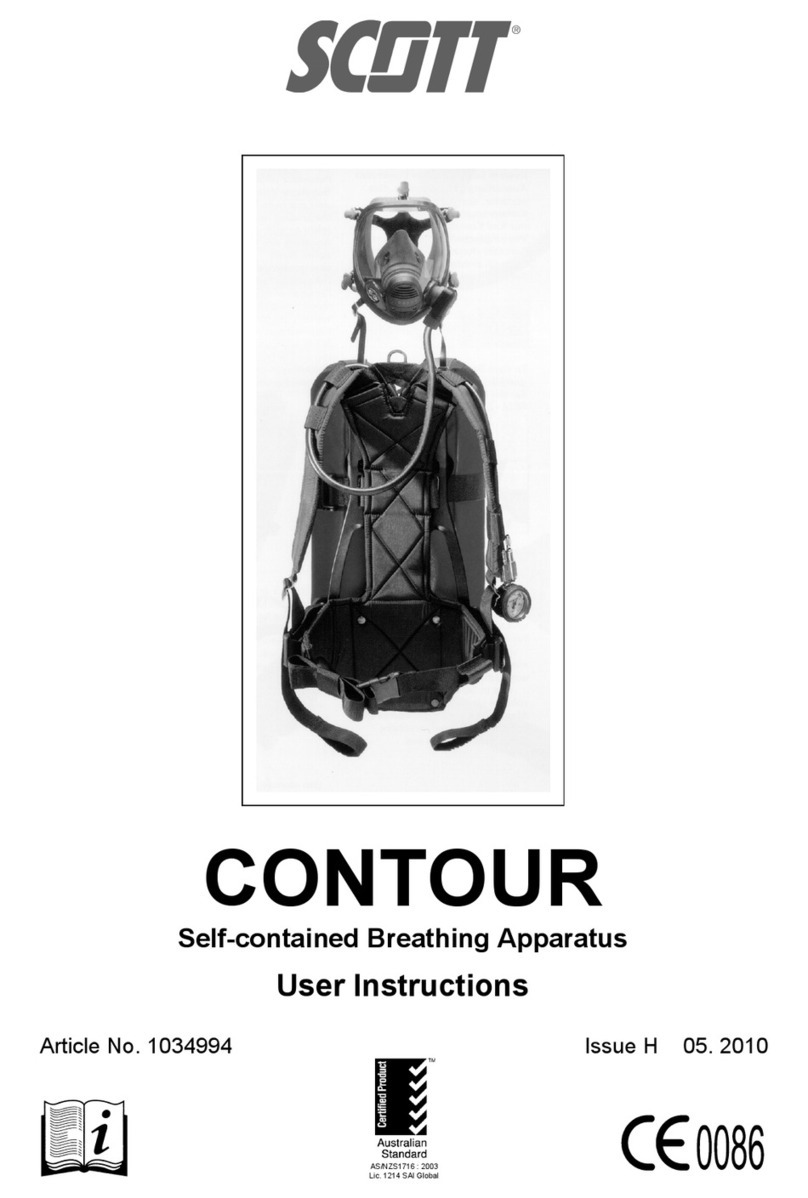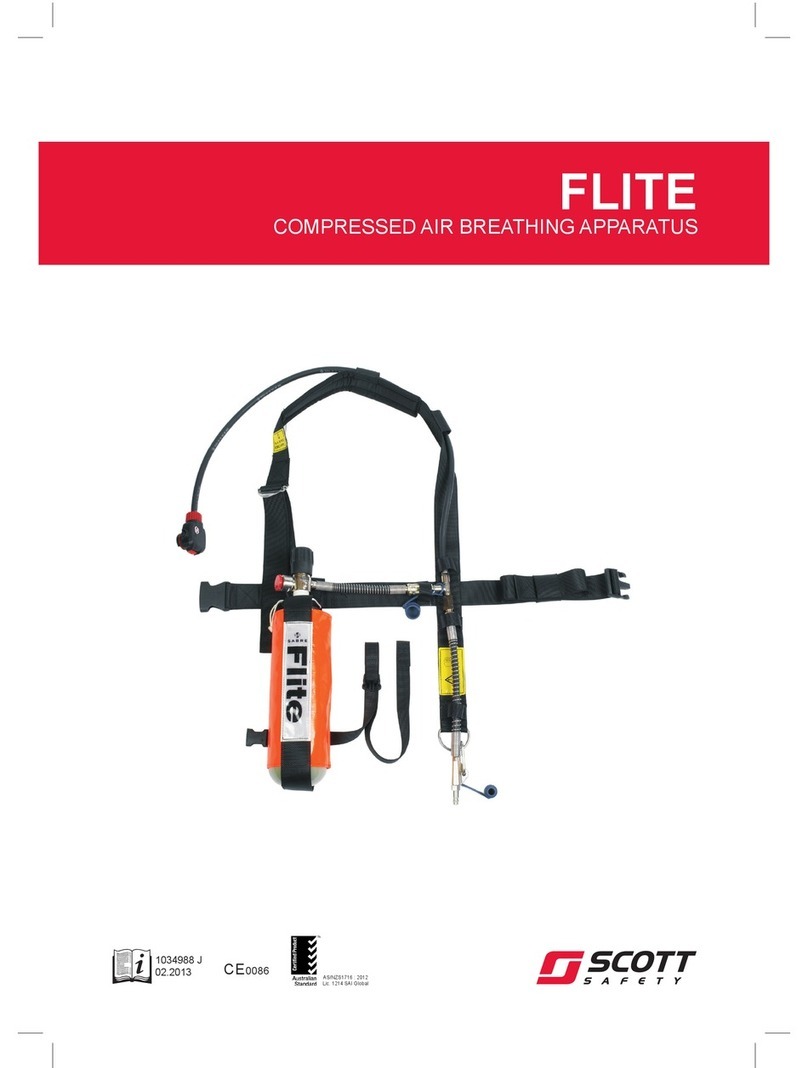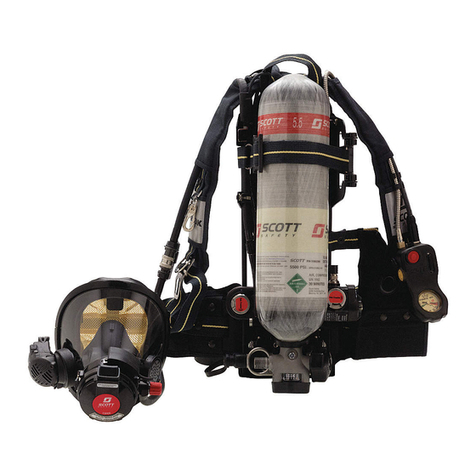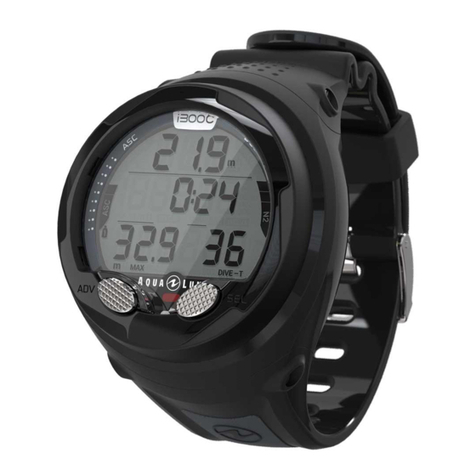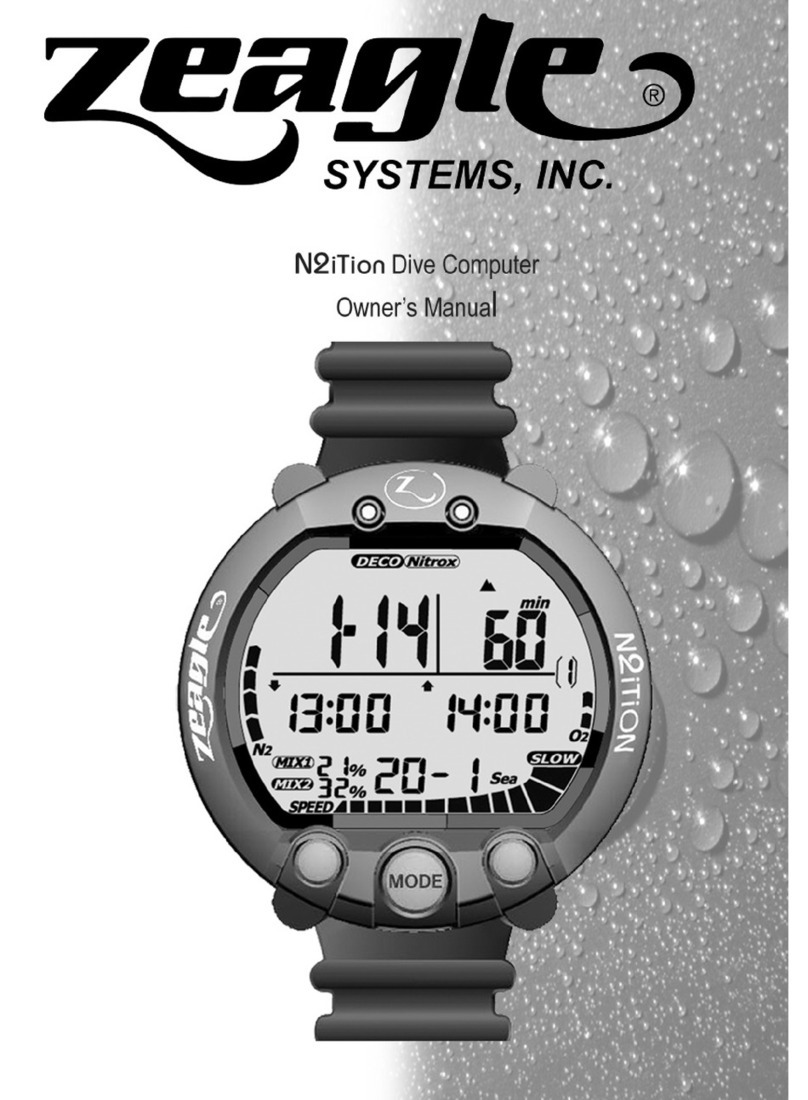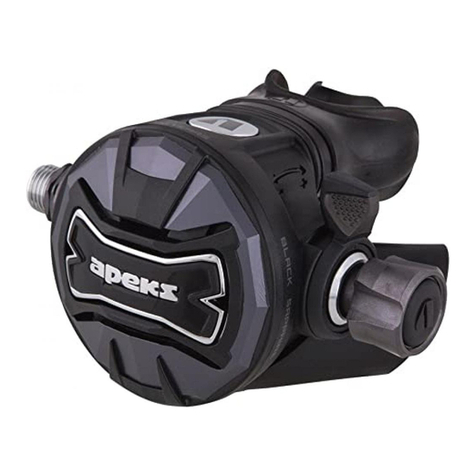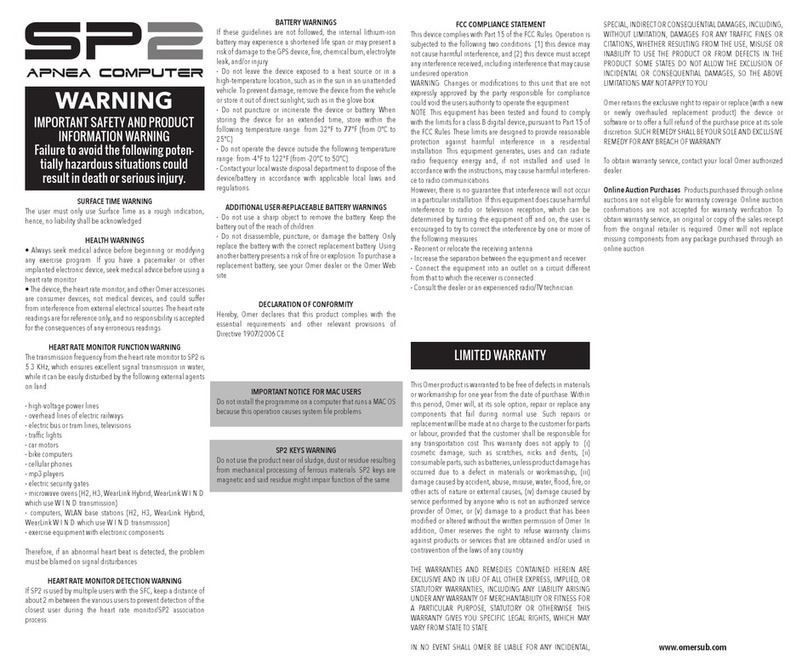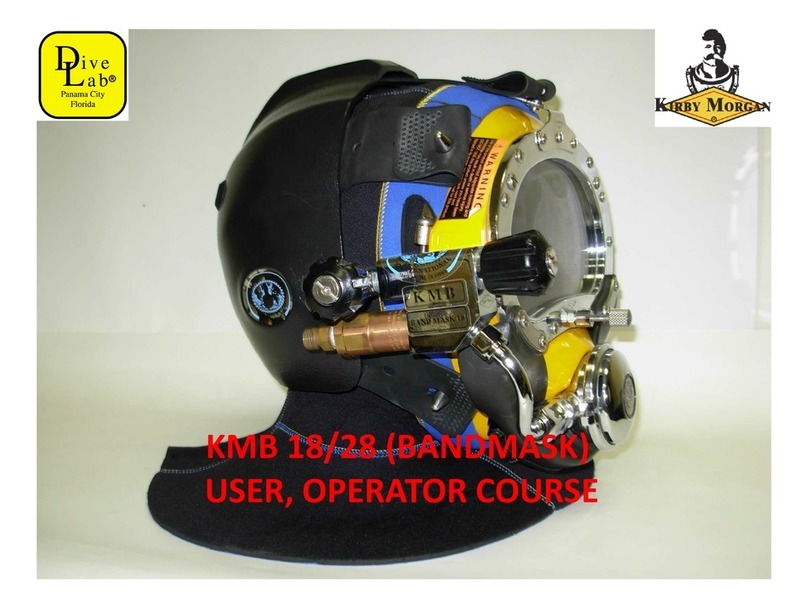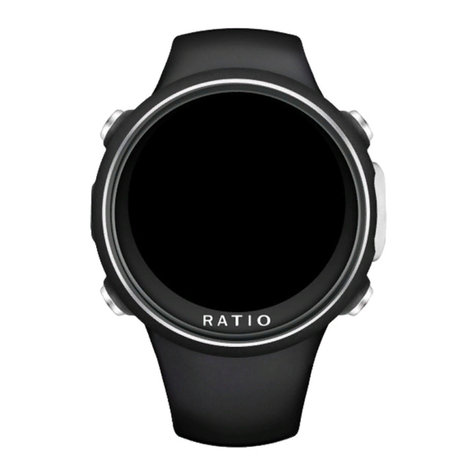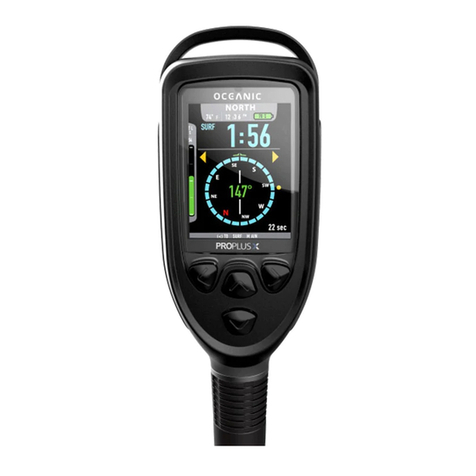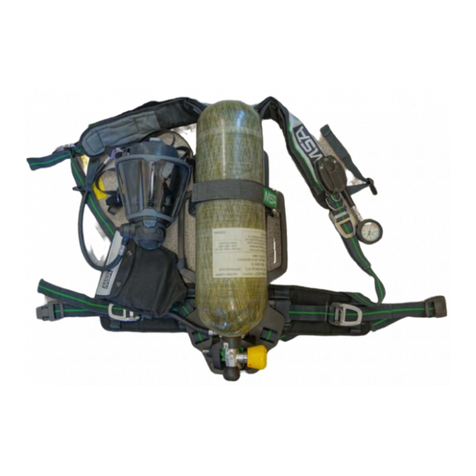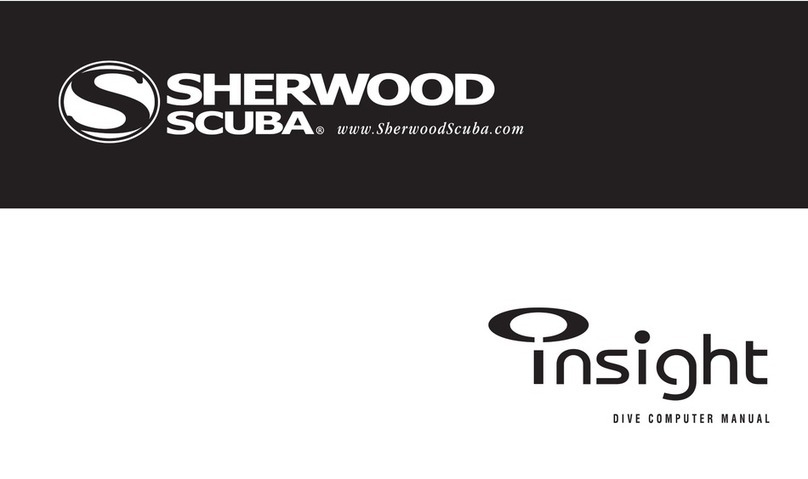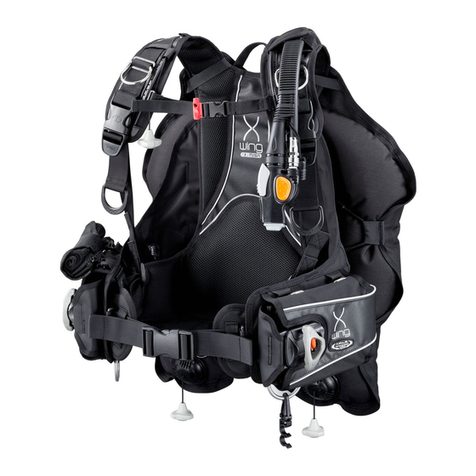
i
Self-contained Breathing Apparatus
Contents
WARNINGS ............................................................................................................................................................................... ii
1. INTRODUCTION.......................................................................................................................................................... 1
1.1 ABBREVIATIONS............................................................................................................................................... 1
1.2 BREATHABLE AIR............................................................................................................................................. 1
1.3 COMPRESSED AIR AIRLINE SUPPLIES.......................................................................................................... 1
1.4 APPARATUS DURATION .................................................................................................................................. 2
1.5 PERSONNEL TRAINING ................................................................................................................................... 2
1.6 SERVICING........................................................................................................................................................ 2
1.7 SPARE PARTS AND ACCESSORIES ............................................................................................................... 2
1.8 WARRANTY....................................................................................................................................................... 3
1.9 NOTIFIED BODIES ............................................................................................................................................ 3
2. APPARATUS DESCRIPTION...................................................................................................................................... 3
2.1 GENERAL .......................................................................................................................................................... 3
2.2 HARNESS .......................................................................................................................................................... 4
2.3 CYLINDER BAND .............................................................................................................................................. 4
2.4 THE PNEUMATIC SYSTEM .............................................................................................................................. 4
2.5 REDUCER.......................................................................................................................................................... 6
2.6 GAUGE AND WHISTLE..................................................................................................................................... 6
2.7 DEMAND VALVE ............................................................................................................................................... 6
2.8 OPTIONAL ATTACHMENTS ............................................................................................................................. 7
2.9 FACEMASKS ..................................................................................................................................................... 7
3. PRE-USE AND MONTHLY CHECKS.......................................................................................................................... 8
3.1 CHECK APPARATUS ........................................................................................................................................ 8
3.2 REPLACING SINGLE CYLINDERS ................................................................................................................... 8
3.3 REPLACING DUO CYLINDERS ........................................................................................................................ 9
3.4 CONVERTING FROM DUO CYLINDERS TO SINGLE CYLINDER.................................................................11
3.5 RESET DEMAND VALVE ................................................................................................................................ 12
3.6 CYLINDER PRESSURE / LEAK TEST ............................................................................................................ 12
3.7 DV AND FACEMASK ....................................................................................................................................... 13
3.7.1 All Facemasks......................................................................................................................................... 13
3.7.2 Facemasks with a Web Harness ............................................................................................................ 13
3.7.3 Facemasks with a Net Harness .............................................................................................................. 14
3.8 POSITIVE PRESSURE TEST .......................................................................................................................... 14
3.9 WHISTLE TEST ............................................................................................................................................... 15
3.10 AIRLINE AND DECONTAMINATION ATTACHMENTS ................................................................................... 15
3.11 RSM ATTACHMENTS...................................................................................................................................... 15
3.12 HOSES............................................................................................................................................................. 15
4. DONNING PROCEDURE .......................................................................................................................................... 16
4.1 DON APPARATUS........................................................................................................................................... 16
4.2 CHECK DV / OPEN CYLINDER VALVE .......................................................................................................... 16
4.3 DON FACEMASK............................................................................................................................................. 16
4.3.1 Facemasks with a Web Harness ............................................................................................................ 16
4.3.2 Facemasks with a Net Harness .............................................................................................................. 17
4.4 POSITIVE PRESSURE TEST .......................................................................................................................... 17
4.5 FACEMASK SEAL TEST ................................................................................................................................. 17
4.6 WHISTLE TEST ............................................................................................................................................... 18
4.7 FINAL CHECKS ............................................................................................................................................... 18
4.8 ATTACHING AN AIRLINE................................................................................................................................ 18
5. DOFFING INSTRUCTIONS ....................................................................................................................................... 19
5.1 DOFFING THE APPARATUS .......................................................................................................................... 19
5.2 REMOVE CYLINDER(S) .................................................................................................................................. 19
6. AFTER USE............................................................................................................................................................... 20
6.1 CLEANING ....................................................................................................................................................... 20
6.2 CHECK APPARATUS ...................................................................................................................................... 21
6.3 RECORD TEST DETAILS................................................................................................................................ 21
6.4 STORAGE........................................................................................................................................................ 21
7. SCHEDULED MAINTENANCE.................................................................................................................................. 22
7.1 MONTHLY........................................................................................................................................................ 22
7.2 ANNUALLY....................................................................................................................................................... 22
Registered Office: Scott Health and Safety Limited, Pimbo Road, West Pimbo,
Skelmersdale, Lancashire, WN8 9RA, England.


